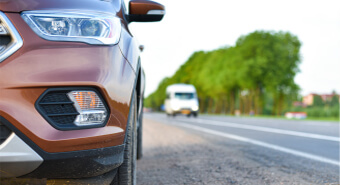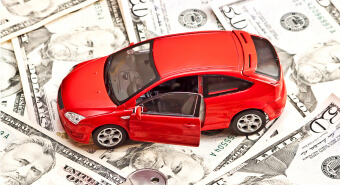Shop for auto insurance online.
 Shop from home
Shop from home You could save big!
You could save big! No-hassle online process
No-hassle online process
Types of Auto Insurance Coverage
There are several components to car insurance. Different aspects of a claim, such as medical injury and property damage, are covered by separate coverage options. Specialized policies regarding coverage for non-owners will also be covered.
Liability Coverage
The following situations are paid by an insurer offering liability coverage:
- • Income interruption
- • Medical and funeral bills
- • Emotional distress
- • Legal expenses
Includes any property resulting from an accident, not just other vehicles. Road signs, fences, and wall damage relating to a claim is under property damage liability domain. Generally speaking, drivers must get a minimum level of liability coverage. Consult your state government for details for required minimums. Note that even though a required minimum level of coverage is technically in good standing, there are often benefits to higher and more comprehensive coverage options. The money saved from low premiums on bare-bones coverage will be quickly negated by even one substantial accident that could have been protected with more robust coverage limits.
Collision Insurance
This type of coverage focuses on your car. Damage caused by another vehicle and flipped/rolled car damage is covered. Unlike liability coverage, collision is optional throughout the US as far as state law is concerned, but lenders or car dealerships may require collision insurance for leased and financed cars. If a claim requires repairs that exceed the value of a car, the insurer can choose to compensate you the full car value.
Comprehensive Insurance
This coverage extends over a broad array of claims. Fire, wind, hail, and flooding damage can be compensated with comprehensive coverage. Vandalism and auto theft, animal and falling object damage will also be covered. As with collision coverage, a car seller may require some level of comprehensive coverage for financed or leased vehicles. Also, as with collision insurance, payment amount will be up to the market value of the car at the time a claim is made. A deductible can be calibrated to provide solid financial protection without excessive premiums.
Uninsured/Underinsured Coverage
An accident may happen with the other party having insufficient or nonexistent insurance to compensate medical or car repair/replacement expenses. This type of coverage steps in to provide extra funds for the necessary expenses.
Personal Injury Protection (PIP)
Some coverage depends on whether or not you are found at fault. PIP does not make this distinction and covers you, any passengers, and family members for accident-related lost wages, cost of "essential services" necessarily incurred if you, passengers or family is incapacitated, as well as medical/funeral expenses. Lastly, note that PIP can offer coverage to you and your family if you are hit by a vehicle while walking.
Medical Payments Insurance
Like PIP, medical payments insurance doesn't look at fault in evaluating coverage payout for you, family members, car passengers, and anyone you allow to operate your car. Medical payments insurance goes over hospital stays, surgery, dental and X-ray work, as well as general medical and, if applicable, funeral expenses associated with an accident.
Gap Insurance
This special type of coverage fills a "gap" between a completely destroyed car and what is owed on the loan pertaining to that car. For example, let's say a bad accident leaves your car hopelessly beyond repair. At the time of the accident, your car was valued at 12,000 dollars, but your auto loan for that car still had 15,000 of principal. Even if all the car market value was applied towards the auto loan, this situation would leave you with a 3,000 bill, paying for something you don't own anymore. This gap, 3,000 dollars in this example, is what's covered by gap insurance.
Full coverage
Full coverage is certainly broad in scope, but it is not impervious to out of pocket expense. Full coverage refers to liability, collision, and comprehensive coverage.
Coverage Recommendations
Medical payments insurance isn't necessary if you have other health or injury coverage. Nonetheless, medical payment coverage can work with your health insurance to cover any outstanding costs that may be above other coverage limits or outside the scope of covered injuries.
PIP is a good investment for those without much stashed away in savings. Income loss and hefty medical expenses can quickly wipe out savings. PIP coverage is generally affordable and well worth the money if an accident results in medical issues.
As with several other insurance types, gap insurance may be required by a dealership if you want to finance or lease a car. If you own a vehicle or owe a very small amount for its financing, gap insurance is not necessary. Gap payouts only activate when amount owed on a loan or leased vehicle exceeds car market value. Lastly, it would be wise to buy gap insurance from an insurance company, not from your car dealer. Dealership gap insurance can be a few hundred dollars more expensive than the same coverage from an insurance provider.
Summary
You've gone over various car insurance coverage options. Some are necessary by law, some by agreement with a car dealership. All serve to protect you, your family, passengers, and other drivers from hefty financial obligation in the event of a claim.



